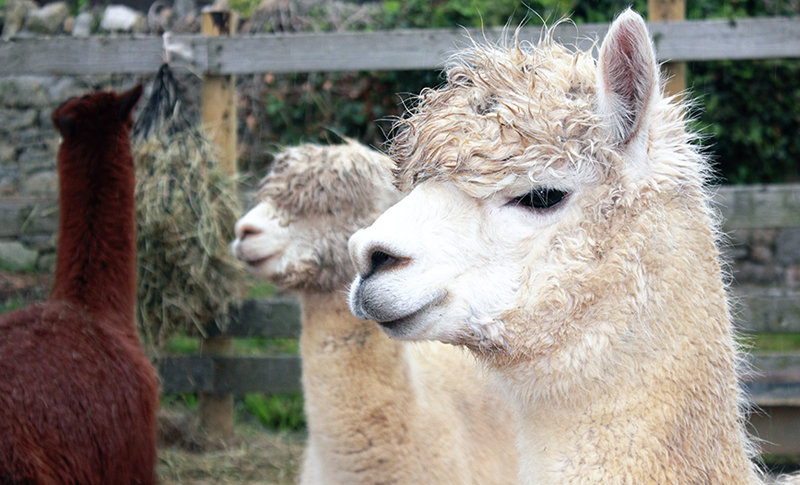Llamas

- Llamas are members of the camel (camelid) family. They originated in the Central Plains of North America.
- Llamas were domesticated from the guanacos of the Andean highlands of Peru 5,000 to 6,000 years ago. They are among the world's oldest domestic animals. Because their ancestors evolved in the harsh environment of the Andean highlands, North American llama owners have found them to be easy to care for.
- While primarily a beast of burden for ancient herdsmen, llamas also provided ancient people with meat, wool, hides for shelter and manure pellets for fuel.
- Contemporary North American llamas are primarily recreational animals. They are bred and raised for packing, wool production, cart pulling, animal facilitated therapy, companion animals, exhibition in shows, parades and fairs, and guardians of other livestock such as sheep. They are excellent pack animals. They are sure-footed and agile and can carry an average of 80 lbs, or 25 percent of their body weight.
- Llama wool is warm and luxurious, grease-free and lightweight. It is sought after by fiber artists, such as weavers and spinners.
- The life span of a llama is 15 to 29 years.
- Llamas weigh 200 to 450 pounds. They measure 36-47 inches at the shoulder and 5 feet to 6 feet, 5 inches at the head
- The average gestation period for a llama is 350 days (11.5 months).
- A llama may be solid, spotted, or marked in a wide variety of patterns. Wool colors range from white to black, with many shades of gray, beige, brown, red and roan in between.
- A single baby ("cria") is usually delivered from a standing mother, normally without assistance. Twinning is a rare occurrence. Normal birth weights are between 20 to 35 pounds. The cria usually stands and nurses within 90 minutes. Depending upon the cria's size and the mother's condition, the baby is weaned at 4 to 6 months.
- Llamas are intelligent. They learn quickly to accept a halter, follow on a lead, load in and out of a vehicle, or carry a pack.
- Llamas are modified ruminants with a three-compartment stomach. Like cattle and sheep, they chew their cud. Because of a relatively low protein requirement and an efficient digestive system, they can be kept on a variety of suitable pastures or hay, with the supplementation of recommended vitamins, minerals and salt. A llama costs significantly less to feed than other comparable-sized animals.
- Llamas are highly sociable herd animals and need the companionship of other llamas. They are independent yet shy, gentle and curious
- Llamas communicate by humming. They also express themselves through a series of ear, body, and tail postures. On rare occasions they will alert their companions and human keepers with a distinctive alarm call to the presence of unfamiliar dogs or other creatures which they perceive as threats. During breeding males make a distinctive orgling sound.
- Llamas will spit at other llamas in order to establish the pecking order within the group, to ward off an unwanted suitor, or to say "Bug off!". A llama who has been mishandled or feels threatened may occasionally spit at humans.
